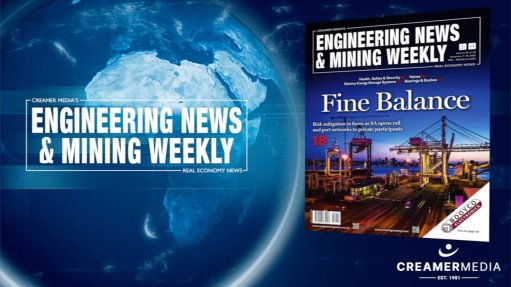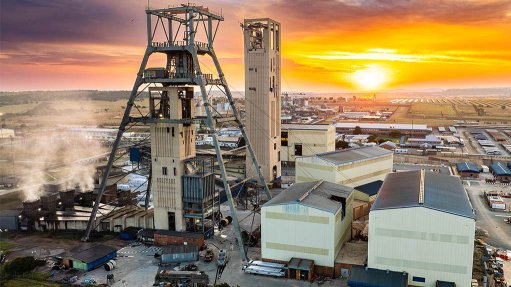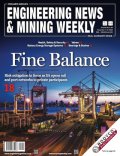Africa’s Giant Eye on the Sky Marks Two Decades of Discovery and Astronomical Excellence
This article has been supplied and will be available for a limited time only on this website.
On 10 November, the Southern African Large Telescope (SALT), Africa’s largest optical telescope and one of the most powerful in the world, celebrated its 20th anniversary of astronomical excellence and breakthroughs. This flagship facility for South African and global astronomy was officially inaugurated in 2005 by the then President of the Republic of South Africa, Thabo Mbeki.
The milestone event was jointly hosted by SALT, the Department of Science, Technology and Innovation (DSTI) and the South African Astronomical Observatory (NRF-SAAO), a national facility of the National Research Foundation, in Sutherland, Northern Cape, where SALT continues to operate. The commemorative celebration brought together dignitaries, prominent astronomers and scientists, as well as the representatives from international partners to reflect on SALT’s scientific impact and enduring legacy.
In his welcome address Prof Brian Chaboyer, SALT Board Chair, said SALT was the first South African-built optical telescope, a decision he described as courageous on many levels, since previous optical telescopes had all been built outside the country. “Motivated by an ambitious science white paper from the new government, there was a plan for South Africa to build and operate the largest single optical telescope in the Southern Hemisphere,” said Prof Chaboyer.
Delivering the keynote address, Deputy Minister of Science, Technology and Innovation, Dr Nomalungelo Gina, said the democratic government’s decision in 1998 to fund SALT’s construction was a defining moment for South African science. “SALT was built to serve both science and society, linking frontier research with education, technology and socio-economic development. It showed that big science can drive national progress.”
As South Africa looks ahead, Dr Gina reaffirmed the Department’s commitment to sustaining and expanding the country’s global leadership in astronomy. “SALT’s 20-year journey is a story of vision, perseverance and excellence. We remain committed to ensuring it continues to shine as a beacon of African science, uniting research, education, and innovation for the benefit of humanity,” said Dr Gina.
SALT is more than a telescope, but a symbol of what is possible when vision, investment, and international cooperation come together in pursuit of knowledge and progress, Dr Gina added.
Speaking on behalf of the NRF, NRF Board Chair, Prof Mosa Moshabela, emphasised that the conception of SALT was not only a scientific ambition, but a governance decision of courage. “It represented a conviction that South Africa could build and sustain a world-class research facility and, through it, redefine its place in global science,” he said.
The NRF leadership championed that vision and provided the stewardship needed to make SALT a reality, said Prof Moshabela. “From conception to construction, and through two decades of operation, the NRF has remained the principal shareholder, funder, and custodian of SALT’s success.”
Prof Moshabela further highlighted that behind every discovery made by SALT is a person — a student, technician, engineer, or scientist — whose growth tells a parallel story of progress. He added that SALT has served not only as a laboratory for scientific discovery but also as a workshop for human development. Said Prof Moshabela, “Over fifty doctoral theses have been produced using SALT data, and hundreds of students have gained hands-on training at the Observatory. Many of them now occupy leading positions in research and technology, locally and abroad.”
Affectionately known as Africa’s Giant Eye on the Sky, SALT remains the largest single optical telescope in the Southern Hemisphere, capable of detecting light from celestial objects a billion times too faint to be seen with the naked eye. Originally conceptualised in the late 1990s as a bold national scientific endeavour, the project became a reality in 1998 when the South African government committed US$10 million towards its construction. Completed in 2005, SALT entered full scientific operations in 2011 and has since delivered groundbreaking research that continues to shape our understanding of the universe.
Over the past two decades, SALT has achieved numerous astronomical milestones, including:
- Kilonova of GW170817 (2017): Among the first telescopes to capture the optical afterglow of a neutron star merger, contributing critical data to confirm theories of heavy element formation.
- Exoplanet Microlensing (2019): Supported the characterisation of newly discovered exoplanets, showcasing SALT’s capacity for rapid follow-up spectroscopy.
- Eight Super-Hot Stars Unveiled (2020): Identified eight new extremely hot subdwarf stars, advancing understanding of stellar evolution.
- “Peekaboo” Galaxy Discovery (2022): Characterised an ultra-low-metallicity galaxy offering a rare local glimpse into early-Universe conditions.
- Four-Star Multi-Stellar System (2023): Confirmed the gravitational binding of a unique quadruple star system, informing theories of multi-star formation.
As SALT embarks on its next decade, its partners and international collaborators remain committed to expanding the telescope’s scientific reach and strengthening South Africa’s role as a hub for cutting-edge astronomy.
Article Enquiry
Email Article
Save Article
Feedback
To advertise email advertising@creamermedia.co.za or click here
Announcements
What's On
Subscribe to improve your user experience...
Option 1 (equivalent of R125 a month):
Receive a weekly copy of Creamer Media's Engineering News & Mining Weekly magazine
(print copy for those in South Africa and e-magazine for those outside of South Africa)
Receive daily email newsletters
Access to full search results
Access archive of magazine back copies
Access to Projects in Progress
Access to ONE Research Report of your choice in PDF format
Option 2 (equivalent of R375 a month):
All benefits from Option 1
PLUS
Access to Creamer Media's Research Channel Africa for ALL Research Reports, in PDF format, on various industrial and mining sectors
including Electricity; Water; Energy Transition; Hydrogen; Roads, Rail and Ports; Coal; Gold; Platinum; Battery Metals; etc.
Already a subscriber?
Forgotten your password?
Receive weekly copy of Creamer Media's Engineering News & Mining Weekly magazine (print copy for those in South Africa and e-magazine for those outside of South Africa)
➕
Recieve daily email newsletters
➕
Access to full search results
➕
Access archive of magazine back copies
➕
Access to Projects in Progress
➕
Access to ONE Research Report of your choice in PDF format
RESEARCH CHANNEL AFRICA
R4500 (equivalent of R375 a month)
SUBSCRIBEAll benefits from Option 1
➕
Access to Creamer Media's Research Channel Africa for ALL Research Reports on various industrial and mining sectors, in PDF format, including on:
Electricity
➕
Water
➕
Energy Transition
➕
Hydrogen
➕
Roads, Rail and Ports
➕
Coal
➕
Gold
➕
Platinum
➕
Battery Metals
➕
etc.
Receive all benefits from Option 1 or Option 2 delivered to numerous people at your company
➕
Multiple User names and Passwords for simultaneous log-ins
➕
Intranet integration access to all in your organisation





















